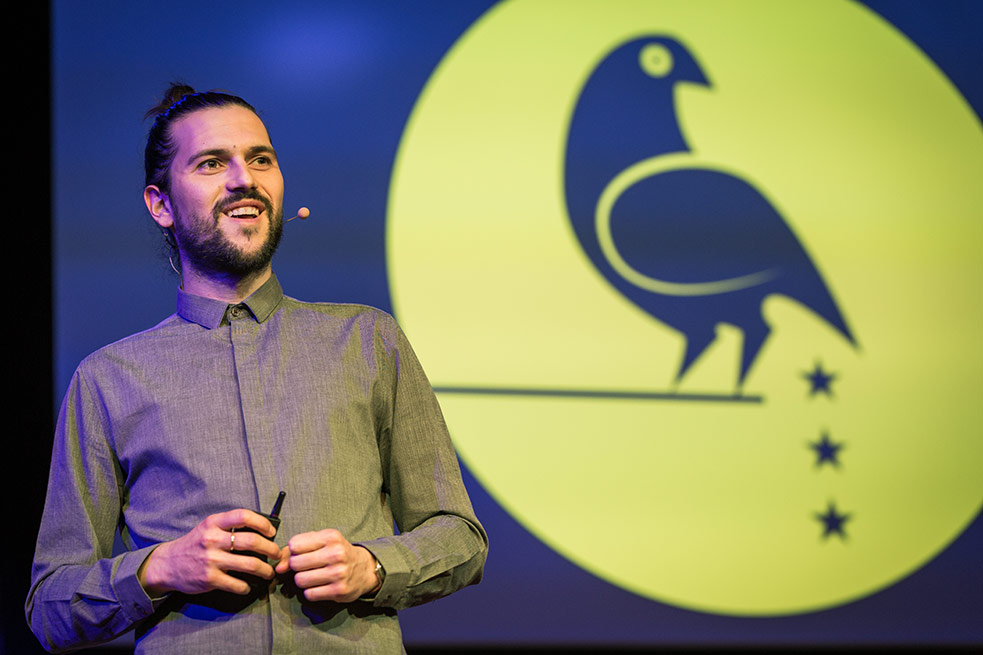
Jorge Mañes Rubio makes his own souvenirs—to have a reminder of his travels and create interactions with locals. Photo: Ryan Lash
From China’s underwater cities to Amsterdam’s neglected neighborhoods to Italy’s looted ruins, Jorge Mañes Rubio seeks out forsaken places and makes art that memorializes, reimagines and reengages them with the world. His project “Normal Pool Level” — which emerged from his exploration of the cities, towns and villages submerged by China’s Three Gorges Dam Project — is on exhibition at the Centre for Chinese Contemporary Art in Manchester, England, until September 7. So it felt like the perfect time to ask Rubio more about this exhibit, as well as about the experiences that led him from a stable career in design to life as a perpetual tourist.
Let’s start with your current exhibition. How did you end up in China, looking for abandoned underwater cities?
My project in China was something very special to me, on so many levels. It all started when I moved to Chongqing for two months in 2013 as part of an artist-in-residence program. The city was quite tough, and pretty much nobody could speak English, so in the end I decided to travel along the Yangtze River, looking for the remains of the cities flooded by the Three Gorges Dam Project. Thousands of cities and villages have been submerged, and so far 4 million people have been forced to relocate—but very few people know this.
During my journey I came across cities that have no name, cities that don’t appear on any map. On one hand, I was really excited to be able to explore these places which very few people have seen. But on the other, I was appalled to see the conditions people were living in. We’re talking about entire cities that have been pretty much destroyed and left isolated, but where some people have refused to leave. I decided to create a series of souvenirs and symbols that would document and recognize these forgotten cities, and at the same time help me to express this inner conflict I went through during my journey.
What kind of objects did you create?
In the beginning, my intention was just to look for these cities, and to explore this area. But the more I saw, the more I understood that these places deserved recognition. I was struggling with the fact that I found some of these places extremely beautiful. It was a strange and tragic beauty, but a fascinating one nevertheless. I knew photographs were not enough to convey those feelings, so I started to gather materials and objects along the road, and later I modified them and transformed them into the symbols that compose the project.
The most representative are probably two plastic jerrycans that contain water from the Yangtze River. I collected this water at the exact point where the old city of Fengdu used to stand, now completely submerged under the water. Later on, I painted these jerrycans with traditional chinese motifs, as if they were precious Chinese vases. The result is an object whose identity is heavily questioned, which doesn’t seem to belong either to Eastern or Western culture, but that represents the clash between traditional Chinese culture and industrialization. There are more than 10 objects and installations in total, together with a series of photographs.
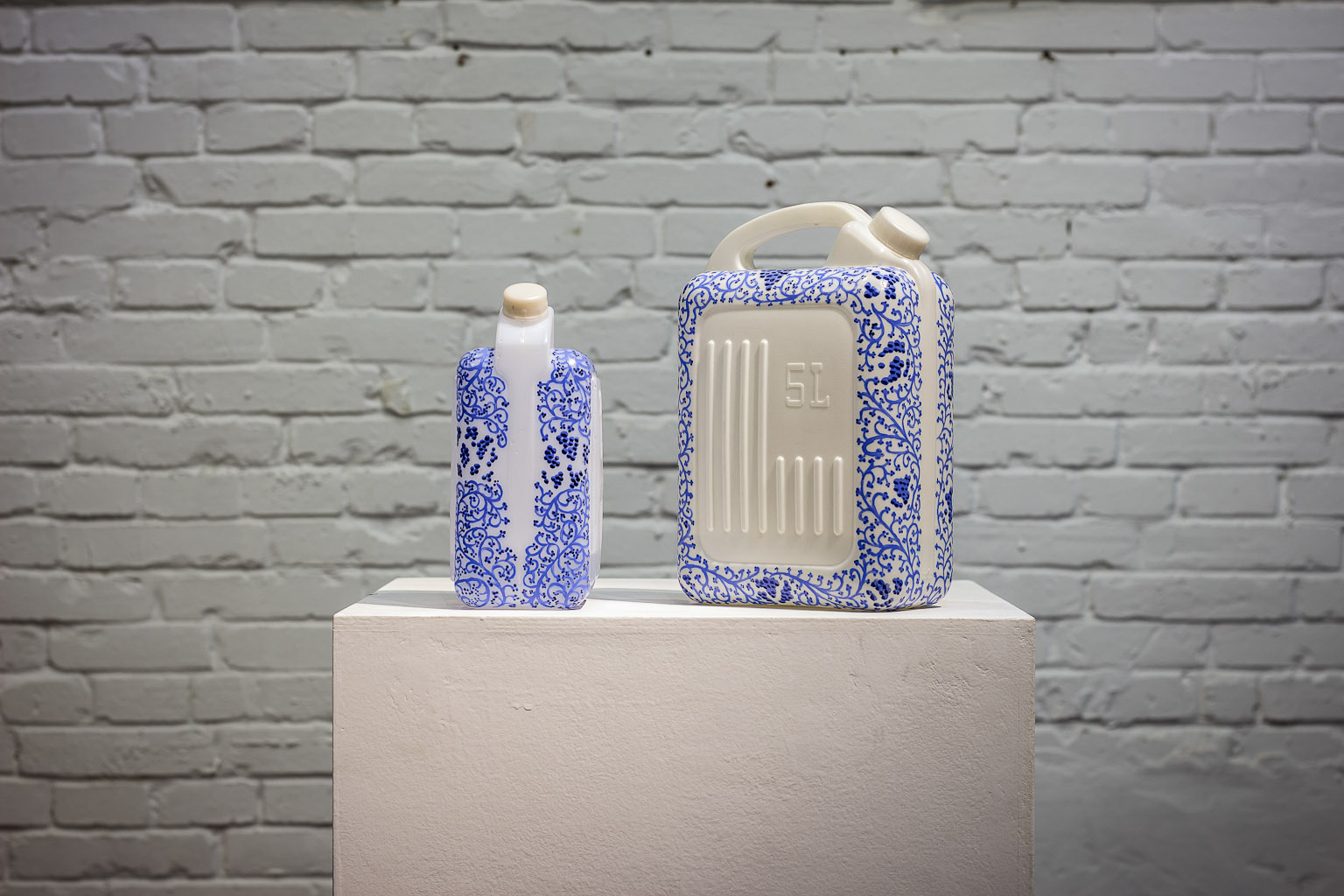
Plastic jerrycans, basic containers for water or fuel, are painted to look like Chinese vases. Fengdu Jerry Cans, from the Normal Pool Level series. Exhibition view at the 501 Contemporary Art Centre, Chongqing, China. Photo: Seethisway.
You call yourself a “perpetual tourist.” What does this mean, especially in the context of design?
Until fairly recently, I worked with design companies on everyday items like chairs, furniture or small products — homeware, vases, so on. But while I was studying at the Royal College of Art in London, I joined a program that was very experimental, pushing the boundaries of design. So my work became much more about the impact design can have in our current society, beyond manufacturing everyday items.
To put it concisely, I became interested in experience. Right now, with any product that you have or acquire, what you look forward to is the experiences the product might allow you to have. So I started thinking about tourism. In a way, industrial design is about creating a product, and replicating it millions of times. And tourism is the mass-production of experiences. You create one experience — say, going to the top of the Eiffel Tower — and then millions of people have, literally, that very same experience. I also find interesting the way people behave when they are tourists. Things look different, the food tastes different, and you dare to do things that otherwise you’d never do. You’re way more open to learning about new cultures, meeting new people. You become someone else. I thought, “What if I apply that kind of behavior to everyday experiences? Can I behave like a tourist every day?”
I did a few projects that explored these ideas. One was an illegal souvenir production project on top of the Eiffel Tower. Another one — my graduation project — was a portable souvenir factory. I rode my bike for three weeks along the Camino de Santiago in Spain, and attached to the bike I had a portable rotational molding machine. In every village, I met different people, and I used my machine to manufacture my own souvenirs on the road — in contrast to the experience of buying, you know, fridge magnets.
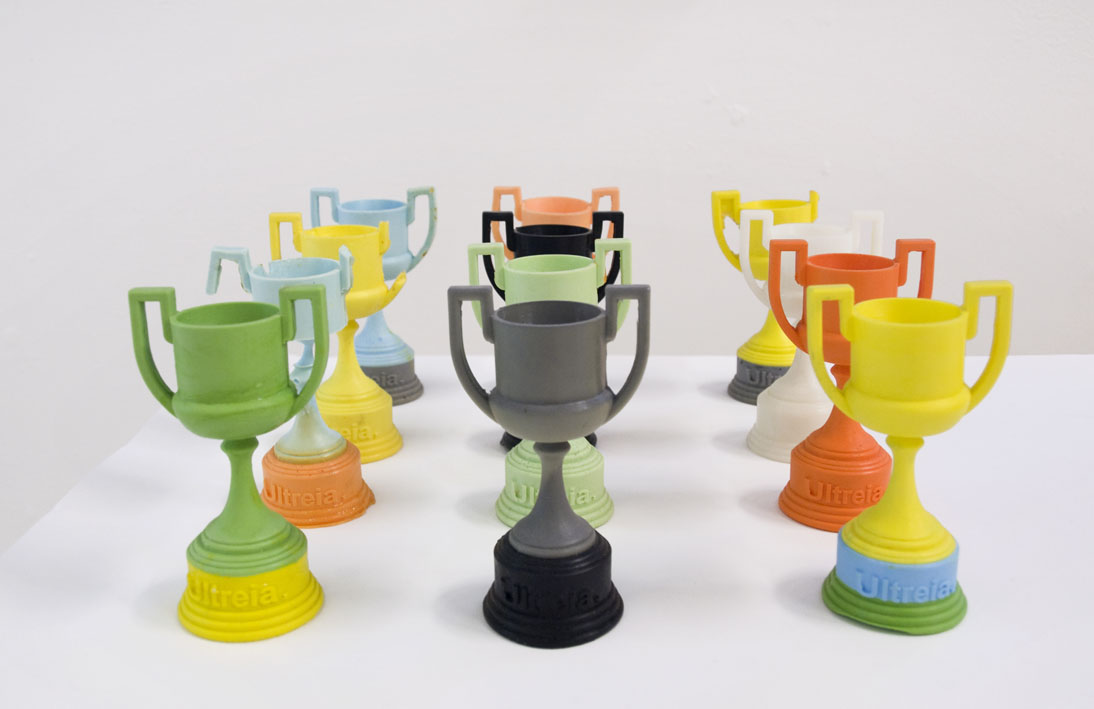
Rubio made these trophies to commemorate playing a game of football with a group of kids. La Copa del Rey, from the Ultreia, the Nomad Factory series. Exhibition view at the Royal College of Art, London, UK. Photo: Matthew Booth.
Did you give them away to the people you met?
Sometimes I made them just for myself, sometimes I gave them away. The act of giving them away allowed me to create a unique scenario or situation that made the human interaction much more interesting. On other occasions, I was learning new crafts and skills from people I met on the road, using those skills to my own advantage. The whole process allowed me to have a much more authentic experience.
The machine is quite simple — you can just cycle with it, and it works with the movement of the bicycle. So as long as you’re traveling, you can manufacture objects. You put molds inside it, and using different materials — silicon, fiberglass, bioresin — you can create all kinds of products. For example, I was giving football trophies away to kids after I played football with them, so that they’d have a souvenir of our experience. I also used the machine to mix different kinds of clay to create ceramics, and even to extract honey from honeycombs.
The Camino de Santiago is a very interesting mix of culture, history, religion, nature and tourism, and it has been extremely commercialized in the last few years, so the project was also about challenging this situation. I traveled with electronics like a GPS, photo and video cameras, a solar panel, and a camping tent. I was completely self-sustaining, and could sleep in the middle of the forest instead of sharing a hostel with hundreds of tourists.
But again, it wasn’t about the objects themselves. It’s about the experiences that these objects generated. I’m interested in super-simple analog artifacts and basic human interactions that can trigger unique experiences. So, for example, when a kid runs to tell his parents that there’s a guy who came from London with a bicycle and who makes football trophies out of the sun, that experience is unique and will never happen again.
You’ve given them that experience, and you’ve also taken an experience for yourself.
Exactly. The souvenirs I create celebrate this exchange.
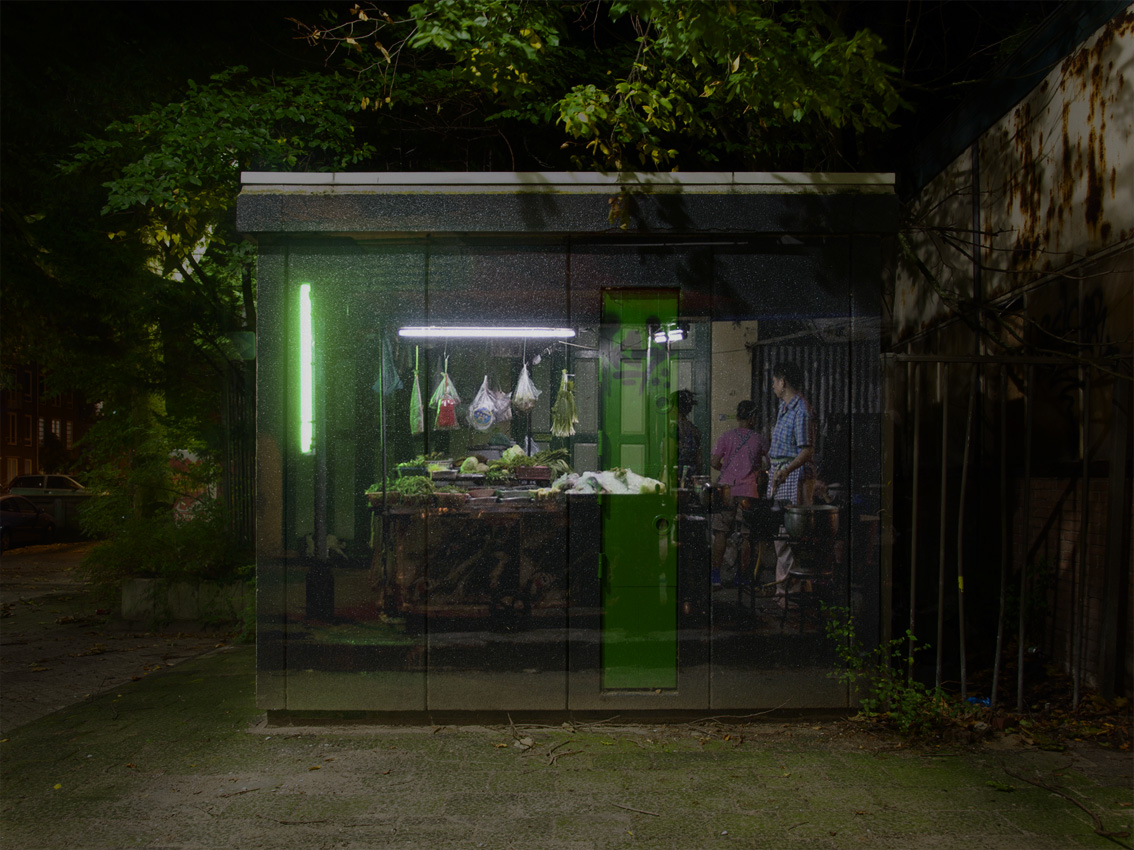
Rubio brings the street vendors of China, India and Morocco to the streets of The Netherlands. Street Food Lighting, Amsterdam. Photo: Seethisway.
I’m also curious about your Street Food Lighting project. I love street food and night markets. Why did you decide to project footage of street food stalls onto urban spaces?
What I like about these kind of places is that they are open until very late, and the lights are really bright. You feel completely safe because there are always people coming and going. They’re so welcoming. It’s not just about the food. I mean, they make the streets a better place. China, India, Morocco — very different cultures, but street food is something they have in common. Fascinated, I started filming these late-night markets and food stalls around the world.
Now I live in Holland, where the cities have many dark streets, empty buildings and storefronts. So I started projecting these videos onto these streets. The idea behind it is that you’ll be heading home late at night in Amsterdam, and all of a sudden you’re taken into a late-night Moroccan spice market, for example. The idea is not just that you’re lighting the streets in a different way. It’s also that you are promoting the streets as a place for social exchange. In Europe, for example, Moroccan people don’t have the same status as a white person. I’m always projecting in neighborhoods or in areas where you’re not supposed to find this kind of work. It’s not like you’re walking in the city center, and you see an art installation, or a big sculpture. I’m doing this in suburbs or in places where people usually don’t interact with art and design. I want to bring this experience to those people and places.
Did you have to get permission to do this?
I presented the project to the City of Eindhoven, and it was awarded in 2012 by the Dutch Design and Architecture Institute, so they funded me to film and produce the project in several locations. It’s now been exhibited in museums and galleries all over the world, from Madrid to Chicago, Shanghai to Seoul. A fun fact is that when it got featured in The Atlantic Cities, they defined the project as a way to fight crime.
I think it’s important to bring something different to our streets, so we can live them in an unexpected way. It seems that the generalized idea of public spaces is that it must be a square with benches and a little fountain, or a shopping mall. But the truth is that there’s much more we could do with our public spaces, especially with those that are abandoned or underused.
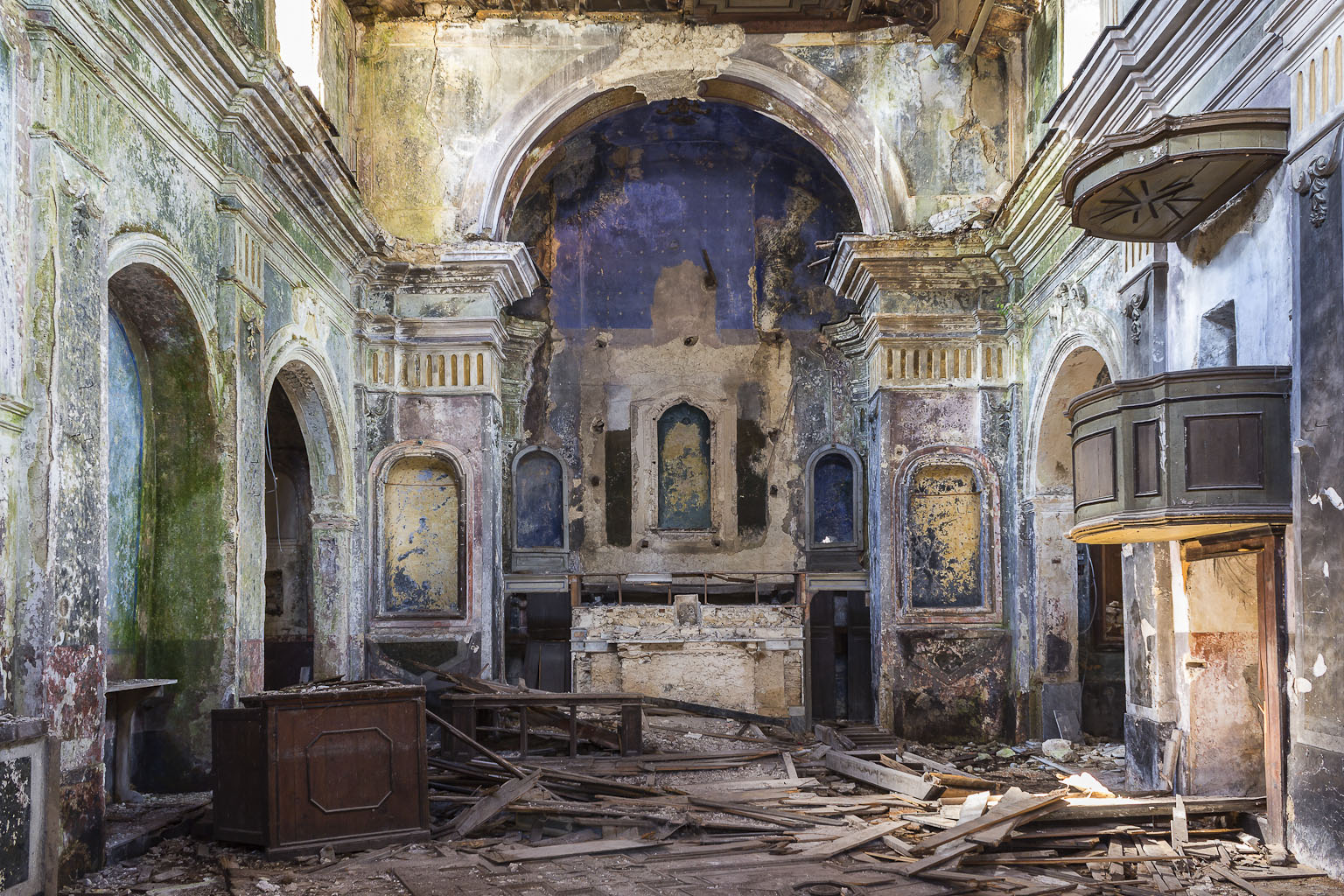
Rubio photographed churches abandoned after a devastating earthquake. Abandoned church. Undisclosed location, Italy. Photo: Seethisway.
You specialize in exploring and making art from abandoned places. Can you tell us about some of those?
Yes, I’m doing a project right now in Italy, in the Cilento National Park, where I found some truly incredible places. My friend, designer Gianluca Tesauro, lives in the south of Italy, and last summer he invited me to come for a few days to relax on the Amalfi Coast. A few months before, in my research, I’d came across a few villages that were abandoned in the ’80s after the devastating earthquake of Irpinia. I was quite surprised that these villages were never rebuilt, so Gianluca and I went to look for them. We were amazed by what we found. Many churches and chapels were still standing. Sadly, people managed to break into these churches, and they looted everything they could. They got all the Madonnas, all the santos, all the paintings and relics. So these places are now completely empty. We decided to start a new project out of this experience.
As an artist, I’m on a permanent quest for this kind of situation, where my work can contribute in changing the way we perceive these places. We talked with locals, and we are now preparing a collaboration with craftsmen from the area, creating a series of new artworks and installations that will replace the stolen icons with new fictional symbols.
This must be very dangerous. These structures look like they’re going to fall down at any minute.
Yeah, it is really sad and quite dangerous. Some of them are open to the public “at your own risk,” others are closed. It’s important to understand that with this project we are not asking for reconstruction or restoration, but to preserve the ruins as what they are today. That conflict between beauty and decay makes them contemporary and relevant for our time. It is what essentially makes them truly works of art.
Why did they allow you inside?
I think they were really surprised that two young guys were taking such a big interest in their heritage. Usually, youngsters go there to drink beers and smash a few windows, but I believe these places deserve much more than that. Some locals do care, but in Italy there’s so much heritage that it’s impossible to preserve everything. What we propose is to reopen these places with a new purpose, and to help preserve their identity.
We want to create a series of new artworks, and place them here, in this church. We aim to open the doors of this place to the public in 2015, 35 years after the quake — not only for the locals, but also for potential visitors. The new artworks are inspired by southern Italian traditions and folklore, but they are not necessarily religious objects, because these places are not religious anymore—they’ve been deconsecrated. The project’s called Buona Fortuna, which means “good luck” in Italian, and it’s represented by a symbol that means good luck in southern Italy. But it also ironically represents the way these places have been completely forgotten — like, “Yeah, good luck with this.”
It’s difficult because we don’t want to work with local funding, as there’s no way we’d have the freedom to do whatever we want. We want to stay away from the regional politics, which are very complex. So, we are selling photographs of the churches in very limited editions, and that’s helping us to promote the project and finance it in a more independent way.
So you’ve gone from straight-ahead industrial design to something far more conceptual. How do you feel about how your work has evolved over time?
I’m still finding my way, even on a practical level. Before, I didn’t really use photography for my projects. I wouldn’t mind documenting what I was doing just with my phone. But now I take my time, I consider it carefully, set up a tripod — you know, take my time. But I would never have called myself a photographer, because photography for me is a tool to help people understand the context in which my artworks are created. But it is true that a few years ago, I saw myself as a designer. I wanted to create products. And now I want something completely different. I want my work to have a social impact that design, most of the time, cannot achieve.
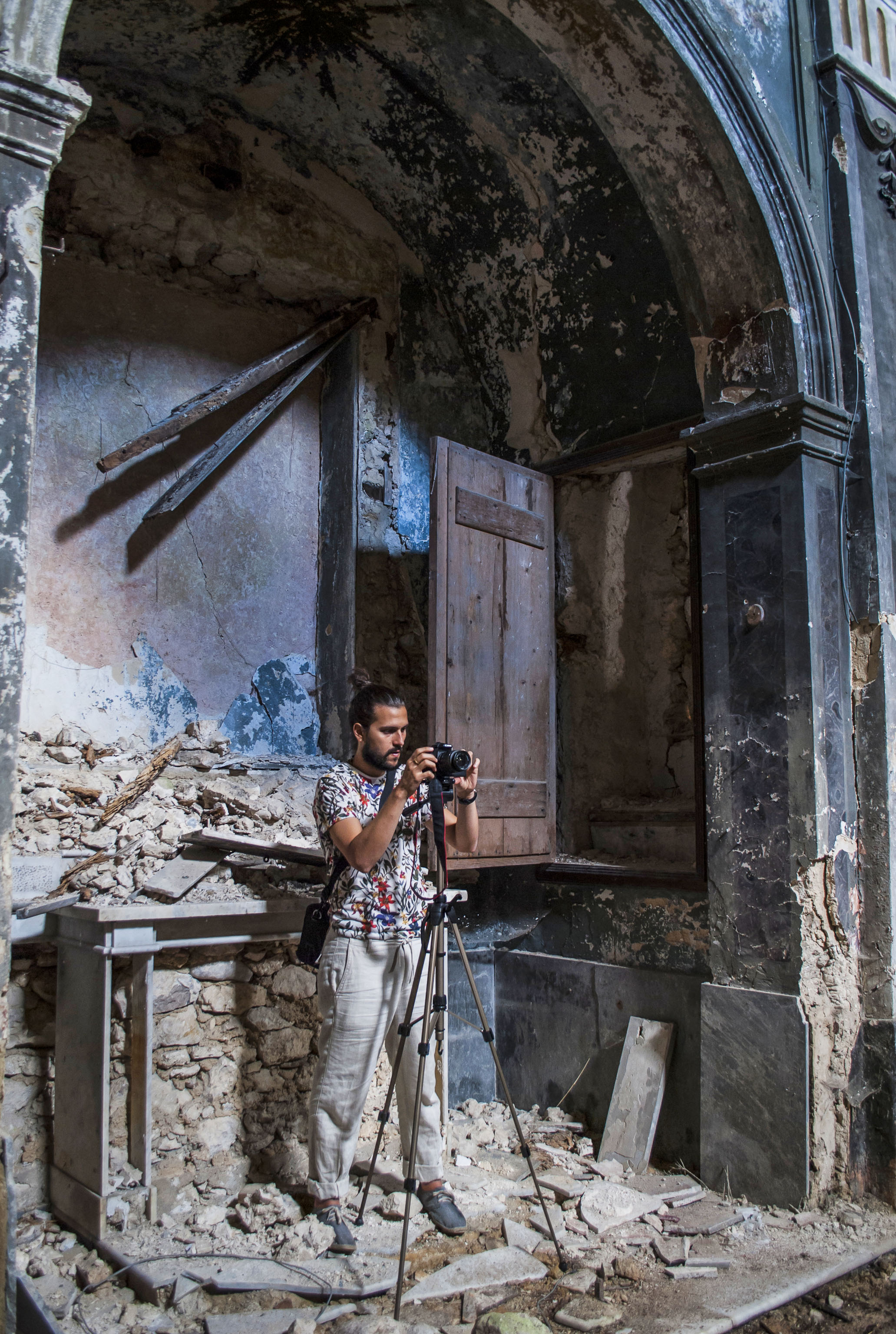
Rubio sets up a shot in an Italian church devastated by an earthquake. Photo: Courtesy of Rubio
Comments (3)